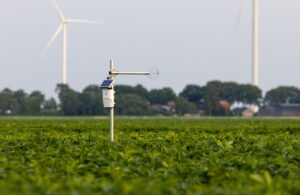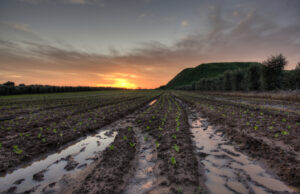Written by Gilly Kinsky, VP Marketing, CropX
Farming has always balanced knowledge and risk. When disease threatens a crop, the instinct is to protect it. Spraying on schedule has long been the standard approach, built on experience and caution.
But today, farmers have new tools that can show when a spray is truly needed and when it is safe to wait. This shift is changing how growers make decisions about disease control and helping them protect their crops with greater precision and confidence.
When Data Meets the Field
CropX Disease Control uses data to predict infection risk before any symptoms appear. By combining weather, soil, crop development, and disease biology, the system models what is happening in the field and what is likely to happen next. It helps answer questions such as:
- Are spores active in my area?
- Is the crop still protected?
- Has recent rainfall or irrigation increased the chance of infection?
Behind these insights lie years of field validation. The system has been tested across thousands of plots in collaboration with farmers, universities, and research centers worldwide. Results show that growers using the system can reduce spray applications by about 30%, often saving two to three treatments per season, without increasing disease risk.
The Hardest Shift is About Trust
For many farmers, the challenge in adopting data-driven disease control is not learning the technology but trusting it. Choosing not to spray, even when risk is low, can feel risky. The hesitation is understandable. When your livelihood depends on a crop, caution is natural.
This is why modern systems must be transparent and easy to understand. Farmers deserve to see why a field is considered low-risk and how that conclusion was reached. Confidence grows when technology supports decision-making instead of simply issuing instructions.
Building on Experience, Not Replacing it
The logic behind CropX Disease Control aligns with how experienced farmers already think. Disease develops only when three factors coincide: spores, a susceptible crop, and the right weather.
The system tracks these conditions continuously and combines them with information from soil moisture sensors, irrigation data, and varietal resistance. This transforms complex interactions into clear, timely recommendations.
Growers remain at the center of every decision. The model provides insight, but the farmer decides the action. The best results come when data and experience work together.
Confidence Creates Sustainability
Reducing unnecessary sprays saves money, time, and fuel. It also reduces runoff, chemical use, and emissions. Across many farms, this adds up to a significant environmental benefit.
At the same time, regulations are moving toward requiring justification for chemical use. CropX Disease Control helps provide that evidence by recording when and why sprays were applied or safely delayed. Sustainability becomes measurable and practical.
Every spray saved is a small win, for the soil, the water, and the farmer’s bottom line. When those savings multiply across fields and seasons, the impact is real.
The Future of Disease Control is Partnership
CropX continues to refine its disease control model by integrating new data sources such as soil and irrigation data and regional disease information. The goal is to create a system that works with the way farmers already think and operate.
Technology can provide powerful insight, but real progress happens when it strengthens human judgment rather than replaces it. Confidence in farming decisions comes from understanding the field, the data, and the timing. With the right tools and information, growers can act with clarity and protect both their crops and their land for the long term.
Discover how data can back your next spray decision. Contact us at CropX here.




